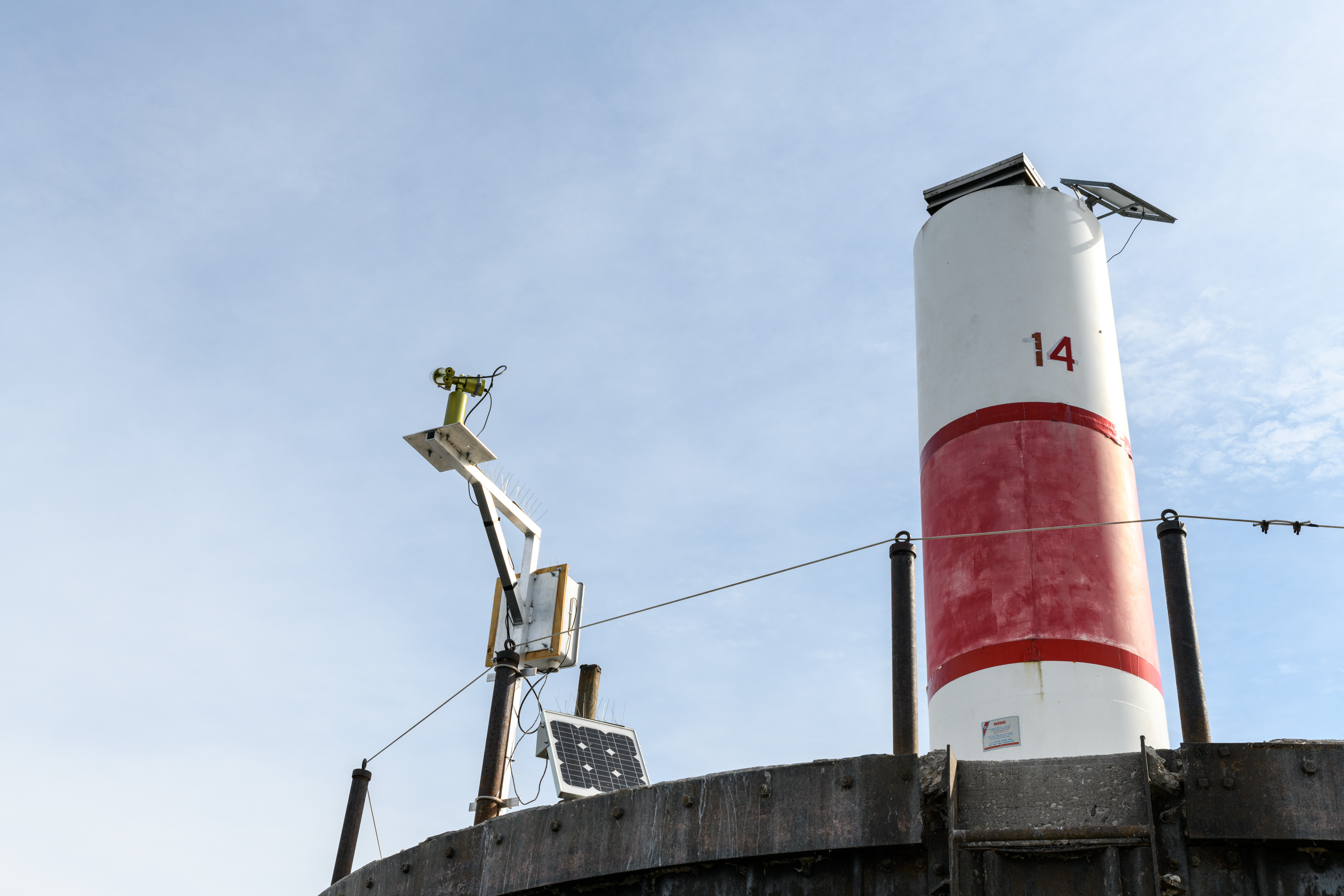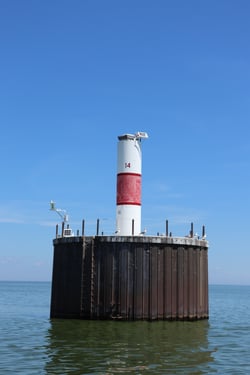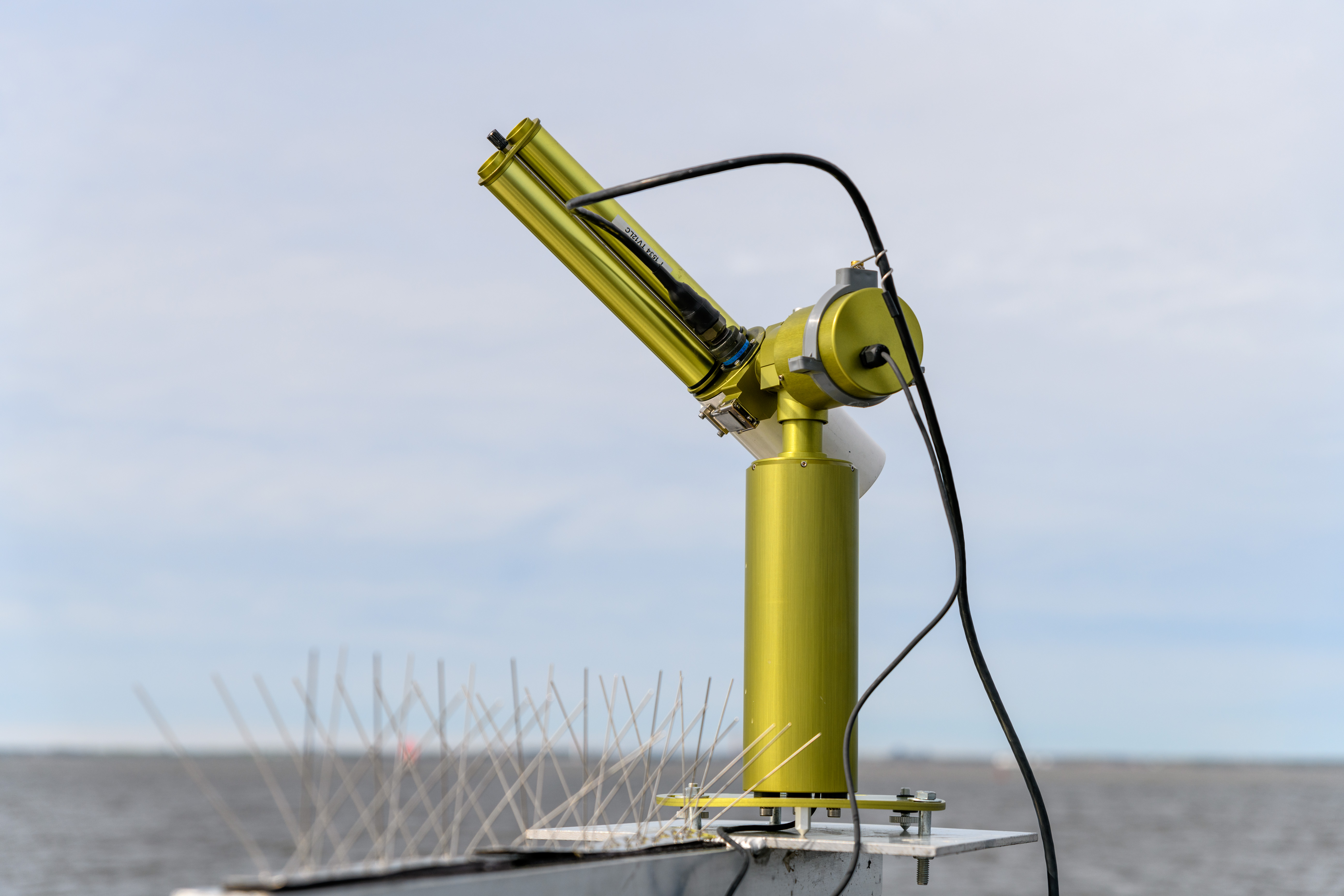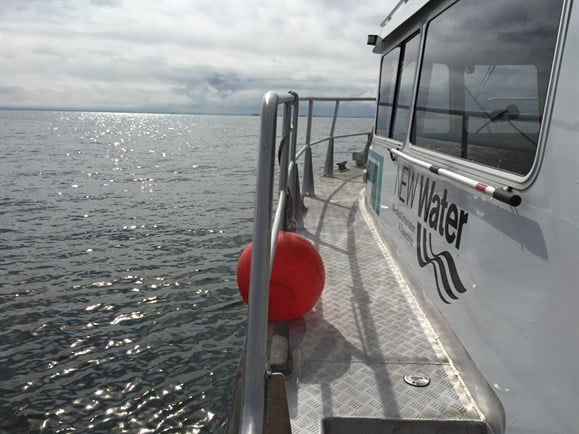
 GREEN BAY – NEW Water is proud to partner with the National Aeronautics and Space Administration on an international effort to advance scientific knowledge of cyanobacteria, also known as blue-green algae.
GREEN BAY – NEW Water is proud to partner with the National Aeronautics and Space Administration on an international effort to advance scientific knowledge of cyanobacteria, also known as blue-green algae.
NEW Water was invited to join the team with NASA on the AERONET-OC initiative due to its well-established Aquatic Monitoring Program and continued dedication to protecting water. The team also includes the University of Wisconsin-Madison, and the Wisconsin Department of Natural Resources. The AERONET-OC instrument referred to as the SeaPRISM is a well-calibrated device which records water color in the Bay to enhance water quality products derived from a suite of satellite missions launched and operated by NASA, the United States Geological Survey (USGS), and the European Space Agency (ESA).
 “We’re very excited to have strong partners and collaborators to help improve our satellite-derived water quality products complementing field monitoring activities,” said NASA Principal Investigator, Dr. Nima Pahlevan. “Partners on the ground are vital in order to ‘ground truth’ the water color measured from our satellites with what is collected at the surface of a body of water.”
“We’re very excited to have strong partners and collaborators to help improve our satellite-derived water quality products complementing field monitoring activities,” said NASA Principal Investigator, Dr. Nima Pahlevan. “Partners on the ground are vital in order to ‘ground truth’ the water color measured from our satellites with what is collected at the surface of a body of water.”
Green Bay is one of three U.S. freshwater bodies selected for recent deployments of the SeaPRISM supported by the Landsat project science office. Lake Okeechobee in Florida and Grizzly Bay in California were also selected – all three spots suffer from cyanobacteria blooms. Cyanobacteria can produce toxins that can be harmful to humans and animals. Studies show that Green Bay is plagued with these toxins; see the white paper on an ongoing joint study on cyanotoxins.

“NEW Water is honored to join NASA to help advance the scientific understanding of water,” said Thomas Sigmund, P.E., Executive Director of NEW Water. “This program incorporates collaboration and innovation: Both are needed to solve the complex water issues of our era.”
The SeaPRISM, which stands for “Photometer Revision for Incident Surface Measurements,” is mounted on a pole in open water in the Bay, at one of NEW Water’s regular monitoring locations where data including nutrients, chlorophyll-a, and turbidity are collected. This makes Green Bay a unique site where both color measurements and water quality data are available.

Cyanobacteria has been detected in lower Green Bay for decades. Many organizations are working to solve pollution problems leading to cyanobacteria and algal blooms, which are causing a “dead zone” in the Bay. NEW Water works with many regional partners in the watershed to achieve healthier waters. One longtime collaborator in water is Dr. Kevin Fermanich from the University of Wisconsin-Green Bay and the University of Wisconsin-Madison Division of Extension.
“What happens on the land directly impacts water quality,” said Dr. Fermanich. “Our work in the watershed actively addresses the runoff issues that lead to water problems in the Bay. Through strategic partnerships, we will be able to achieve healthier waters for the community to enjoy.”